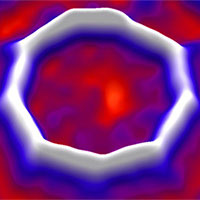There is a question on Quora like this: What is the rarest substance on Earth? With the mind of getting rich, many of us would think of precious metals like gold or similar precious elements. But science has a different answer.
The answer below is provided by Isaac Dixon. Mr. Dixon is not a scientist himself, but his detailed and concise answer is agreed upon by Frederic Rachford, professor of Physics, and Marek Kobera, professor of Mathematics and Physics.
Elements from 1 to 92 (except for positions 43 and 61) all occur in the natural environment of the Earth, some of which exist only in very small amounts. Others, along with a few isotopes of the natural element, are lab products.
None of the elements with atomic numbers greater than 99 have any practical applications, they are only used in scientific research because their half-lives are extremely short, making it impossible to mass produce such elements. .

This is Plutonium, the first scientifically synthesized element, with a half-life of 88 years:
Plutonium is not the rarest element, science later found even rarer things.
That title should go to Hydrogen-7 , which is made up of 1 proton and 6 neutrons. Hydro-7 first appeared in 2003, created by a team of scientists from Russia, Japan and France.

Since there is no photo of the Hydrogen-7, please take a look at the pure hydrogen that lights up in the vial for a moment.
Hydrogen-7 has a half-life of 23 yocto-seconds, or 0.0000000000000000000000023 seconds. This number makes Hydrogen-7 the radioactive isotope with the lowest half-life. Science doesn’t have any pictures of Hydro-7, understandably, who can take a picture of something that only lasts for such a short period of time?

